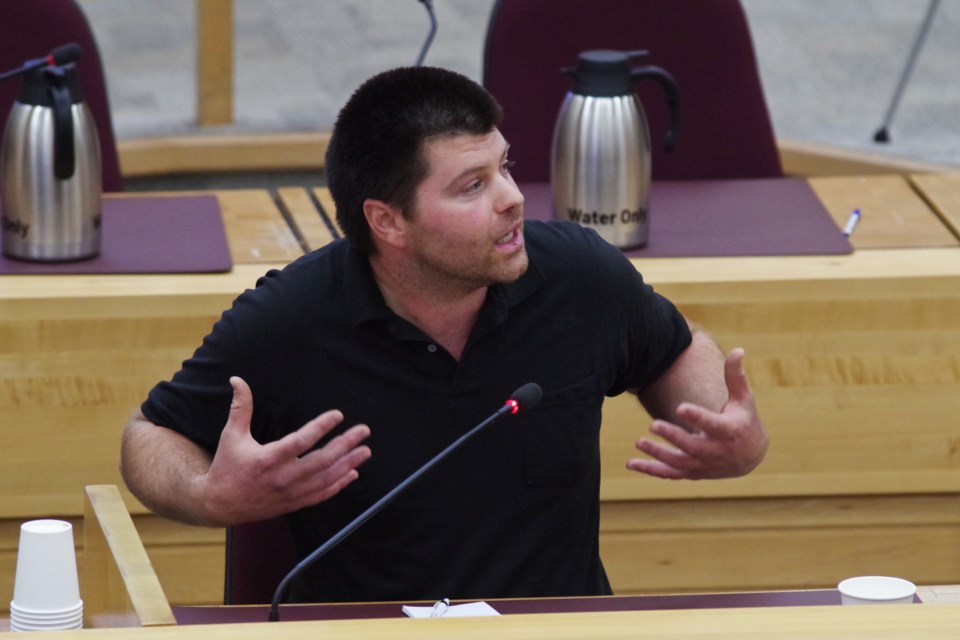SooToday received the following letter to the editor regarding Queen Street revitalization plans from Martin Poirier who was a Ward 5 City Council candidate in the 2022 municipal election:
Centuries ago, replacing concrete with new concrete for aesthetic reasons was a no brainer, if will and money were there.
In a world where the UN’s Secretary General is running out of metaphors to incite us to react to the real and present threat of climate change, such a behaviour should be proscribed.
And yet, that is what we will collectively do if council agrees to the Queen Street Improvement plan.
In a nutshell, the plan is to redo a long stretch of Queen Street almost as it is, sidewalks and street lights included, but with new concrete, a new bike lane, a few more trees, new benches and minor changes to spaces for patios and turns.
Do we really need to scrap and replace all the existing concrete to revamp Queen Street?
Concrete is carbon intensive to produce. Its production is said to be responsible for about 8 per cent of carbon dioxide emissions worldwide.
If our city is serious about reducing its greenhouse gases (GHG) emissions, it should have included an estimate of the amount of GHG this project would generate in its presentation.
Based on the plan and the price tag of $18 million – out of which $2 million is for resurfacing (an aspect on which everybody seems to agree) – we are talking about an important amount of concrete, and thus GHG.
What is the purpose of making Greenhouse Gas Reduction Plans and Energy Consumption Reports if GHG are not taken into consideration in the conception and approval process of very carbon intensive projects?
The last IPCC report on mitigation of climate change was clear: demand-side mitigation with behavioural and socio-cultural change is essential to reach our goals of limiting our GHG emissions.
In plain language, we will need to come around to the idea that some old stuff will have to linger around for as long as it is performing its function, even if some are tired of seeing it. The alternative of scrapping it for something new is simply not compatible with a net zero world.
To make Queen Street a destination, invest in people, not concrete.
Very rare are those who will make a detour to visit a street design. Architecture, yes. Street design, no.
To make Queen Street a destination, people need to be drawn to something.
A potential inspiration is Baie Saint-Paul, Québec.
This small city of just a bit more than seven thousand souls is a beacon of culture, and was even named Canada’s cultural capital in 2007. And yet it is far from big population centres.
This was no accident. It was a deliberate strategy adopted by that city.
They tapped into the fact that great painters were attracted to the region for its natural beauty in the first half of the 20th Century. The first art gallery there only opened around 1975. Then the city hopped in and leveraged its different partners, including the museums and libraries, to attract as much cultural tourism as it could.
It worked. People are flocking to this little town for its art galleries and for all sorts of cultural events; music, theatre, circus, etc. Affluent people are drawn by the possibility to purchase unique art objects. All this is an important influx of money for the city, money which is then partly reinvested to make the place yet more attractive. It is a virtuous circle.
Our city could aim to reproduce Baie Saint-Paul’s cultural success.
We can draw on of the Group of Seven as a founding legend. Queen Street has a lot of unused commercial space where art galleries can be opened up. Partners that can help drive and decouple the project are present, from museums to schools and university.
We can even ask unorthodox partners if they want to chip in. Take firefighters for example. In the city I grew up, they had a very high rate of depression because, in truth, they mostly did nothing day and night. So a pilot project was lunched to make them do clerical work on a voluntary basis. It proved so effective in reducing depression the pilot project became permanent. I have no idea if something of the like can be done here with arts, but it’s worth exploring. Imagine how a competition between different fire stations on art sales volumes could be a fun way to draw people to new Queen Street art galleries. It could even be a source of revenues that could be shared between the galleries and the workers.
Could Social Services be persuaded to reduce its big annual surpluses and open up its useless multi-million dollars reserve to create a pilot project where art creation for a profit is a way of helping people build their lives, all that to strengthen our community and revitalize Queen Street?
– Martin Poirier
